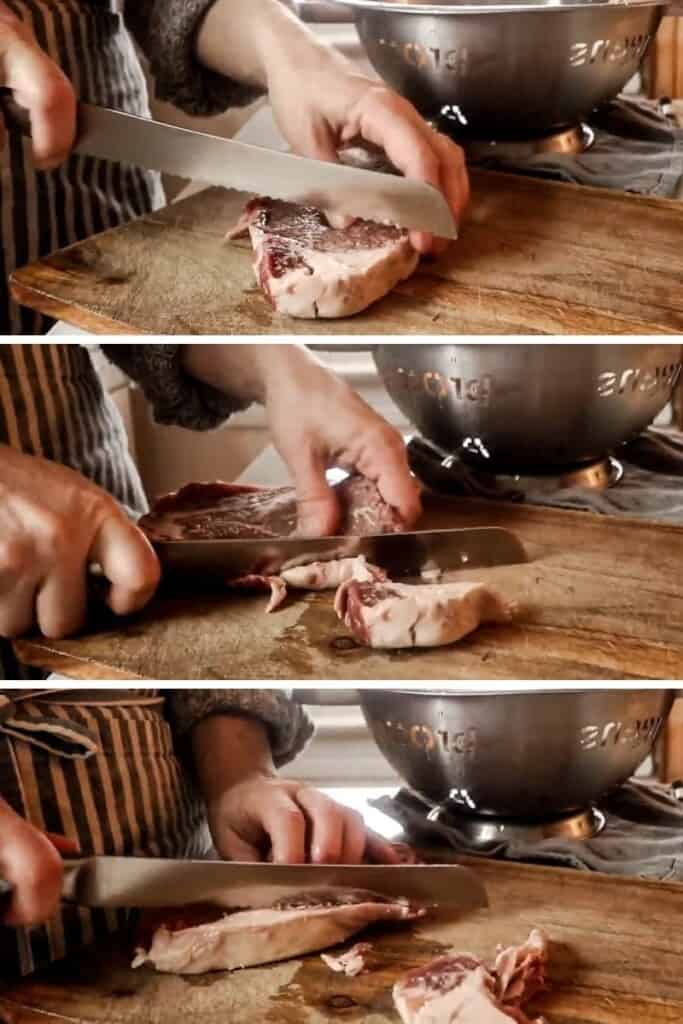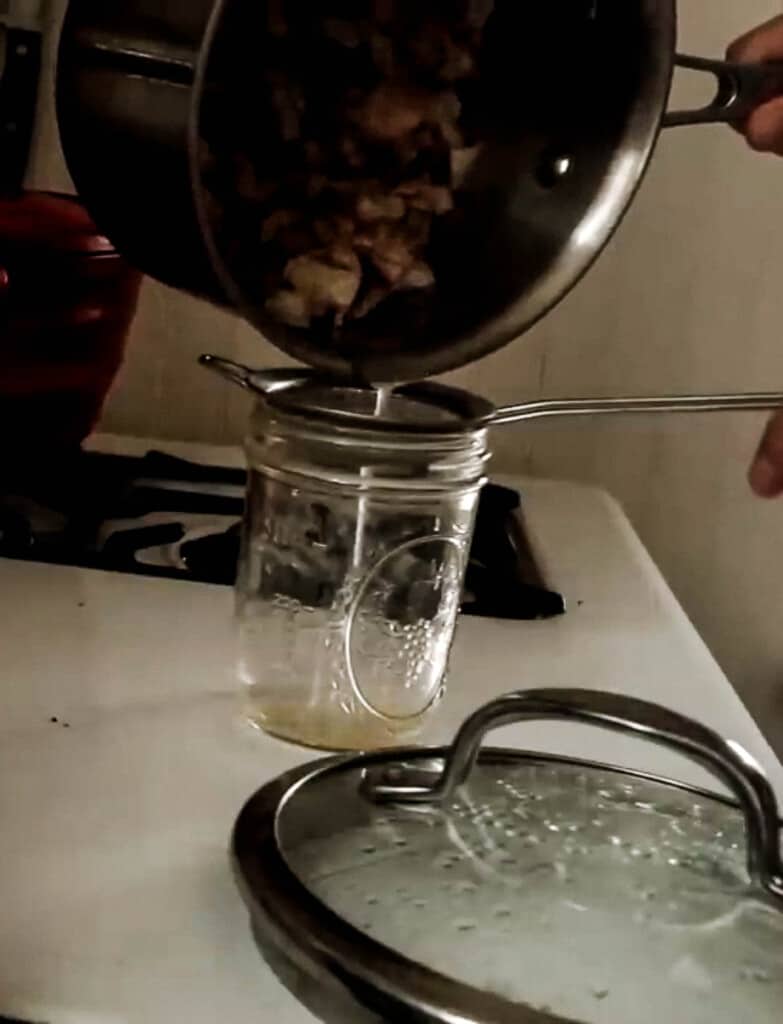In this post, learn how beef fat can be rendered to make a nutritious, multi-purpose cooking oil. This process is quick and simple, requiring only a few minutes of prep and some leftover animal fat (beef, pork, etc).
Each year, we order our meat in bulk and purchase 1/2 of a grass-fed cow. With that order, we end up with a lot of steaks in the freezer. While that sounds fancy, we generally get what the butcher gives up. You can put in some requests, but you always get a wide variety of cuts.
This actually is my preferred way, because we end up saving a lot of money. I also love that we will always have meat on hand to make our family favorite meals like burritos with homemade tortillas, pumpkin chili, stuffed bell peppers, shepherd’s pie, and homemade hamburger helper, just to name a few.
One tricky part of purchasing our meat like this is that you may end up with cuts you aren’t quite as familiar with. This doesn’t bother me, because I love a good cooking challenge.
And when that delicious beef has chunks of fat on it, well, save it for rendering. You already paid for that good quality meat – you might as well get the most out of it!
With a little prep work and some slow cooking, you can make a delicious and healthy oil for cooking or baking.
This post contains affiliate links, which means I make a small commission at no extra cost to you. See my full disclosure here.
What is Beef Tallow? “Tallow” is a fancy name for rendered fat. Specifically, beef tallow is beef fat that has been cooked down with impurities removed. Tallow is a liquid when heated and a solid when cool, making it a great substitution for oil and butter in recipes.

At what temp does beef fat render?
Beef fat renders at 130-140°F (54-60°C). This is a process you want to take slow, so maintain this temperature while cooking for several hours.
How To Render Beef Fat
Remove excess fat from your beef (or pork) using a knife and cutting board. Feel free to dive in there bare-handed and keep it simple.

Cut fat into 1-2 inch portions.
Place into a large saucepan or pot and place over low heat for a few hours, stirring occasionally. You want the temperature to hold around 130-140 degrees. The fat should be a yellow color. If it is starting to turn brown, then the heat may be too high.
After the beef has rendered, while it is still hot, carefully pour the tallow through a fine mesh strainer into a container. Not everything will completely melt. There will be some pieces of meat and other bits that don’t render.

Allow to cool in the refrigerator.
Now your tallow is ready to cook with!
Store in the refrigerator in an air-tight container (I like mason jars for this) for 2-3 months.
5 Ways Tallow (Beef Fat) Can Help You Lose Weight
FAQ
What is beef oil made of?
Is beef fat oil healthy?
What is cow oil called?
What is beef oil?
In this article, we will explore what beef oil is, how it is used, and the potential benefits and risks of consuming it. Beef oil, also known as tallow, has been in use for centuries due to its many benefits. It was first used in ancient Egypt for cooking and lighting purposes.
What are the benefits of having beef?
Beef is an excellent source of protein having 26 grams per 100 grams of serve. Besides, it is rich in vitamin B-12, B-6 and iron. Consumption of beef must be encouraged to meet the protein requirements and overcome nutritional deficiencies like protein-energy deficiency, nutritional deficiency anaemia, megaloblastic anaemia etc. However, beef has high amounts of saturated fats which are potentially capable of elevating the bad cholesterol in the body. Thus, its consumption should be restricted to only once or twice a week and the maximum serving per person should not increase 50 grams.
Why is beef oil good for You?
The oleic acid present in beef oil helps reduce bad cholesterol levels in the body, which can decrease the risk of heart disease. The vitamin E present in beef oil is an antioxidant, which provides protection against cell damage and reduces the risk of cancer.
What is the chemical composition of beef oil?
The chemical composition of beef oil is primarily composed of long-chain fatty acids. These fatty acids include palmitic, stearic, oleic, linoleic, and a small amount of alpha-linolenic acid. It is also rich in vitamins A, D, and E, which are known for their antioxidant properties.
